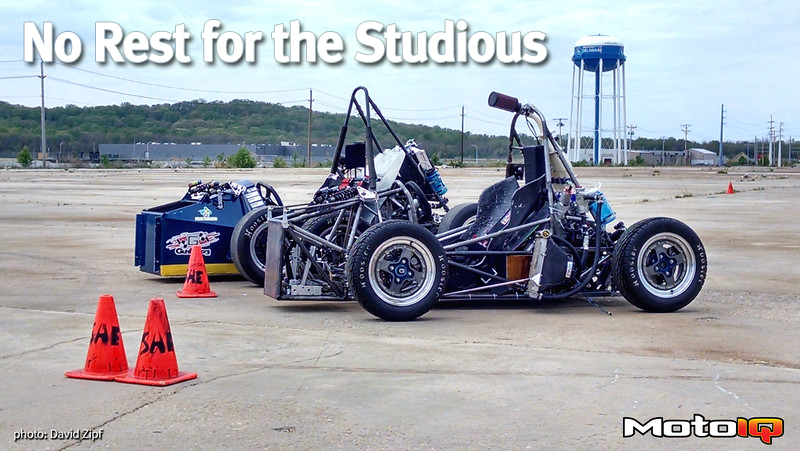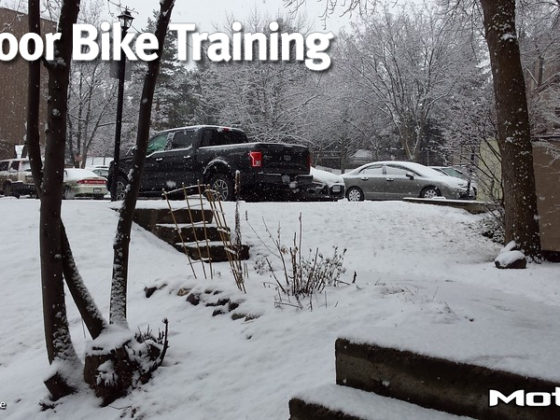No Rest For the Studious: The Story of the University of Delaware BHR14 (Part 3)
In Part 3, we finally get this sucker running! So far in our SAE saga, we've showed you the design process that went into this car, as well as the work that it took to turn a pile of tubes into a rolling chassis. Today, we go from a rolling chassis to a running and driving racecar.
 UD purchased two large, enclosed 3D printers earlier in the year and we took full advantage of them. The biggest part we printed was the intake manifold While the printers are good sized (with a 10”x10”x8” printing bed), they were not large enough to make the manifold in one piece. So we made it in multiple parts and bonded them together with acetone. Using the 3D printer allowed us to try a few different designs and test ideas for plenum volume and runner length. It also allowed us to create a venturi into the inlet restrictor, taking advantage of the Bernoulli effect to get more air into the engine. Since the printer uses direct CAD files, and it takes around 13 hours to print a manifold (which can be done overnight or during class) making changes on the fly is easy, cheap, and very time efficient. Material for the entire manifold costs under $10. Best of all, once a manifold is finalized, the part file can be converted into a mold, which can be printed to allow the construction of a one piece carbon fiber intake. 3D printing is going to be a game changer for small racers, especially those that are creative with the concept. Because of the properties of a 3D printed part, some special design techniques have to be used, but when done properly, the parts are impressive.
UD purchased two large, enclosed 3D printers earlier in the year and we took full advantage of them. The biggest part we printed was the intake manifold While the printers are good sized (with a 10”x10”x8” printing bed), they were not large enough to make the manifold in one piece. So we made it in multiple parts and bonded them together with acetone. Using the 3D printer allowed us to try a few different designs and test ideas for plenum volume and runner length. It also allowed us to create a venturi into the inlet restrictor, taking advantage of the Bernoulli effect to get more air into the engine. Since the printer uses direct CAD files, and it takes around 13 hours to print a manifold (which can be done overnight or during class) making changes on the fly is easy, cheap, and very time efficient. Material for the entire manifold costs under $10. Best of all, once a manifold is finalized, the part file can be converted into a mold, which can be printed to allow the construction of a one piece carbon fiber intake. 3D printing is going to be a game changer for small racers, especially those that are creative with the concept. Because of the properties of a 3D printed part, some special design techniques have to be used, but when done properly, the parts are impressive.
We also were able to print a badass Blue Hen logo onto the outside of the plenum. The first design used a series of screws to help strengthen the manifold (hence the big flange around the edges), but we later found this was unnecessary. To give you an idea of our schedule, this picture was taken sometime between midnight and 1AM. I think we were working on our cost report in the basement of the engineering lab and waited until the manifold was done printing before we called it a night.
 This first intake was a bit uniweldy. The manifold was four pieces all bolted and sealed together, plus a throttle body topped with a K&N air filter. Then silicone hose connectors attach 3D printed elbows, that then connect to Suzuki’s ITBs. This seems complicated, but it’s for a good reason. See, the ITBs also house the fuel injectors. The ABS plastic our printers use dissolves when exposed to gasoline. By using the ITBs (with the throttle plates removed and the holes for the shafts plugged), we can securely mount the injectors while still having our 3D printed manifold. We had to disable the ITBs because they are not allowed under SAE rules. Ideally, we would print the entire manifold in one giant piece and point the injectors directly into the intake runners, but that’s a far bigger investment in time and material (and requires us to outsource the printing job). For a first test, this design worked quite well. On previous cars, we had used a now out of production throttle body that included the intake restrictor (but had no venturi). This car used a student-made throttle body milled from aluminum. Some of you may ask why we used printed elbows instead of silicone. We tried that and found the vacuum pressure of the intake was crushing the silicone! The couplers we used are short enough not to collapse under load. If we had a chance to do a V3 design, we would have probably found a way of printing the elbows into the manifold, or designing them to be bonded to the manifold during assembly.
This first intake was a bit uniweldy. The manifold was four pieces all bolted and sealed together, plus a throttle body topped with a K&N air filter. Then silicone hose connectors attach 3D printed elbows, that then connect to Suzuki’s ITBs. This seems complicated, but it’s for a good reason. See, the ITBs also house the fuel injectors. The ABS plastic our printers use dissolves when exposed to gasoline. By using the ITBs (with the throttle plates removed and the holes for the shafts plugged), we can securely mount the injectors while still having our 3D printed manifold. We had to disable the ITBs because they are not allowed under SAE rules. Ideally, we would print the entire manifold in one giant piece and point the injectors directly into the intake runners, but that’s a far bigger investment in time and material (and requires us to outsource the printing job). For a first test, this design worked quite well. On previous cars, we had used a now out of production throttle body that included the intake restrictor (but had no venturi). This car used a student-made throttle body milled from aluminum. Some of you may ask why we used printed elbows instead of silicone. We tried that and found the vacuum pressure of the intake was crushing the silicone! The couplers we used are short enough not to collapse under load. If we had a chance to do a V3 design, we would have probably found a way of printing the elbows into the manifold, or designing them to be bonded to the manifold during assembly. Our final intake looked like this. Much smaller, lighter and easier to print. The black stuff is JB Weld. It did not bond very well to the plastic. We eventually used acetone to bond and seal the manifold properly. I think this particular intake was printed and assembled the night before a dyno session and we were rushing to get it built.
Our final intake looked like this. Much smaller, lighter and easier to print. The black stuff is JB Weld. It did not bond very well to the plastic. We eventually used acetone to bond and seal the manifold properly. I think this particular intake was printed and assembled the night before a dyno session and we were rushing to get it built.  Things to remember when printing an intake in plastic: because of the intake restrictor, the manifold is under serious vacuum load (see the crushed silicone elbow story above). This support rib (which is actually half of an airfoil to reduce turbulence) supports the middle of the manifold to prevent it from buckling. It also adds to the bonding area to help strengthen the seal between the two halves.
Things to remember when printing an intake in plastic: because of the intake restrictor, the manifold is under serious vacuum load (see the crushed silicone elbow story above). This support rib (which is actually half of an airfoil to reduce turbulence) supports the middle of the manifold to prevent it from buckling. It also adds to the bonding area to help strengthen the seal between the two halves. 



